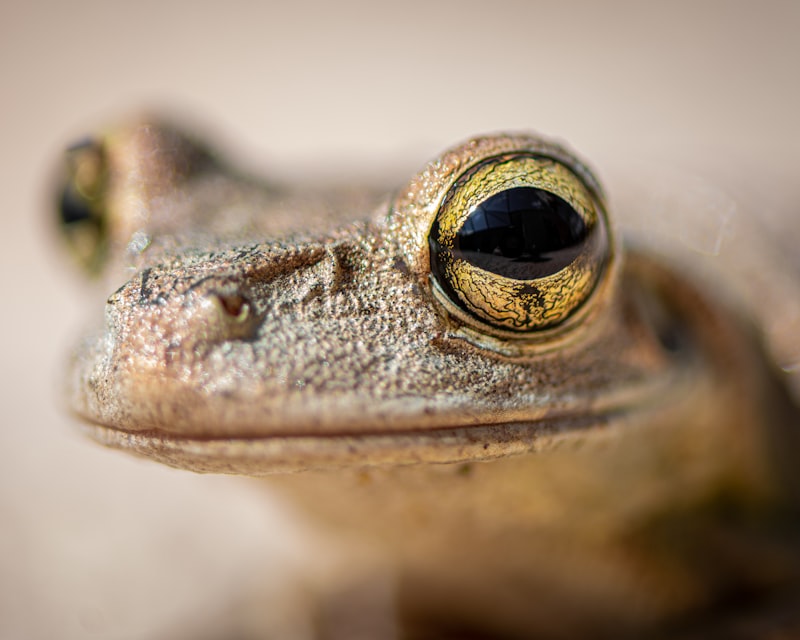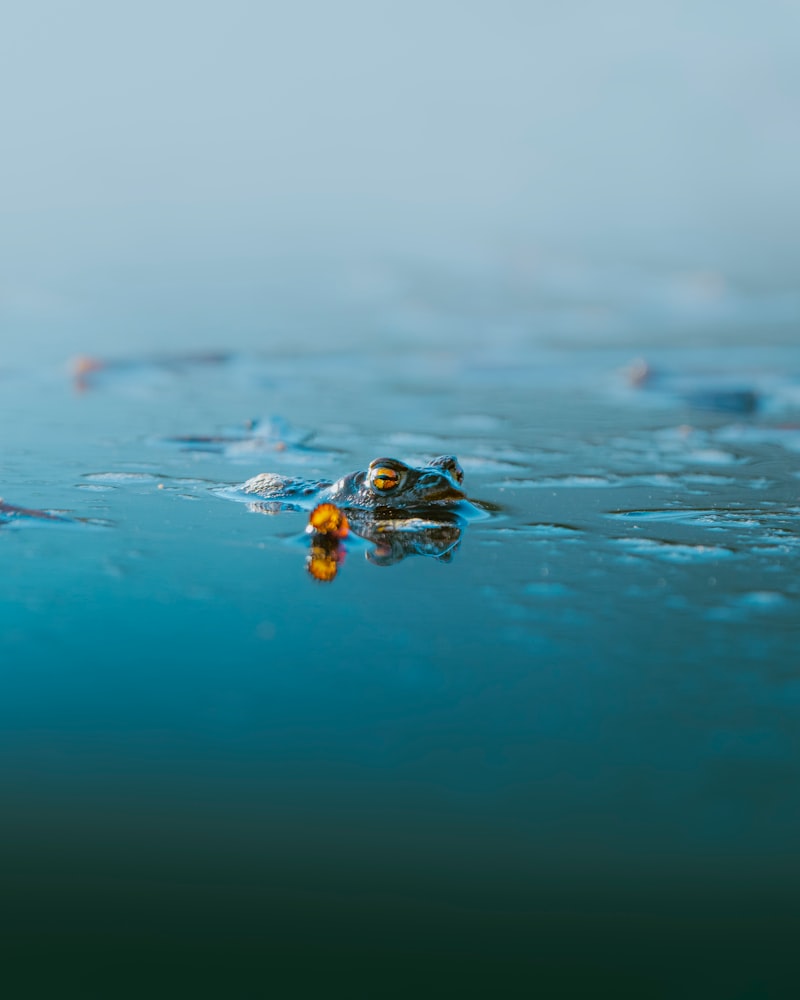
Ever wondered about the world’s most mysterious amphibians? Dive into the realm of strange and rare amphibian species, where nature unfolds its most captivating secrets. These creatures, often elusive and enigmatic, inhabit some of the planet’s most remote and unexplored corners.
Imagine encountering the Borneo flat-headed frog, with its striking flattened head that aids in navigating fast-flowing streams. This oddity not only survives but thrives in the dense jungles of Borneo, showcasing nature’s ingenious adaptations.
Or consider the purple frog of India, resembling a small, plump, purple blob. Found deep underground, this species spends most of its life hidden beneath the soil, emerging only briefly during monsoon season to breed. Its peculiar appearance and secretive lifestyle have baffled scientists for years.
Venture into the cloud forests of Costa Rica and you might stumble upon the glass frog, named for its translucent skin that reveals internal organs. This incredible adaptation serves a dual purpose of camouflage and allowing sunlight to pass through, blending seamlessly with its leafy surroundings.
Further south, in the Amazon rainforest, lurks the Surinam toad, a master of disguise. Its flattened body and fringed skin flaps mimic a decaying leaf, providing unparalleled camouflage against predators. This amphibian takes parental care to a bizarre level, carrying fertilized eggs in pockets on its back until fully developed tadpoles emerge.
These extraordinary creatures remind us of the boundless diversity and resilience of life on Earth. Each species, with its unique traits and survival strategies, adds a fascinating chapter to the story of evolution and adaptation.
Explore the world of strange and rare amphibians, where nature’s creativity knows no bounds. From the depths of rainforests to the hidden recesses of underground rivers, these species continue to astonish and inspire, challenging our understanding of what it means to thrive in the wild.
Mysteries of the Deep: Unveiling Rare Amphibian Species Around the Globe
Ever wondered what lies beneath the surface of our oceans, lakes, and rivers? These amphibians are like the hidden treasures waiting to be discovered by intrepid explorers. Picture yourself on a journey through lush rainforests or remote caves, where you stumble upon a species of frog that glows in the dark or a salamander with iridescent scales. These are not creatures from a fantasy novel but living beings adapting to their unique habitats.
One such marvel is the Axolotl, a Mexican salamander that retains its larval features throughout its life. Known as the “Mexican walking fish,” this amphibian has captivated scientists for its ability to regenerate limbs and even parts of its brain. Imagine the implications for human medicine if we could unlock the secrets of its regeneration abilities!

Another enigma is the Purple Frog of India, which spends most of its life underground and only emerges briefly during monsoons to breed. Its peculiar appearance and lifestyle have earned it the nickname “pig-nosed frog,” resembling something straight out of a science fiction movie rather than the natural world.
Why are these amphibians so crucial to our understanding of biodiversity? They represent ancient lineages of life that have survived for millions of years, adapting to changes in their environments. Their survival holds clues to our planet’s past and future, offering insights into climate change, habitat loss, and the delicate balance of ecosystems.
Beyond Ordinary: The Fascinating World of Rare Amphibians
Take the Axolotl, for instance, often referred to as the “Mexican walking fish,” though it’s not a fish at all but rather an amphibian. Native to the lakes of Mexico, the Axolotl is famous for its regenerative abilities, capable of regrowing entire limbs—a feat that continues to astound scientists worldwide. Its external gills give it a mystical appearance, almost like a creature from a fantasy novel brought to life.
Then there’s the Purple Frog, a resident of the Western Ghats in India. This peculiar amphibian spends most of its life underground, emerging only briefly during the monsoon season for breeding. Its bloated body and pointed snout make it look more like a tiny alien than a typical frog. Yet, its unique lifestyle contributes to the delicate balance of its ecosystem, showcasing nature’s incredible adaptability.
Moving to the mountains of Ecuador, we encounter the glass frog, named for its translucent belly that allows you to see its internal organs. This evolutionary trait isn’t just for show—it helps camouflage the frog from predators while allowing sunlight to penetrate, aiding in digestion. It’s a small creature with a big impact on its environment, illustrating how even the smallest amphibians play crucial roles in their ecosystems.
From the psychedelic hues of the Vietnamese mossy frog to the elusive Borneo flat-headed frog, each rare amphibian offers a glimpse into the diversity and wonder of our natural world. Their existence challenges our perception of what is possible, reminding us that there are still mysteries waiting to be uncovered beneath the surface of our planet’s ecosystems.
Hidden Wonders: Discovering Earth’s Most Unique Amphibian Creatures
One of the most captivating amphibians is the Axolotl, often referred to as the “Mexican walking fish” due to its external gills that resemble a flowing mane. Found exclusively in the ancient waterways of Mexico, this amphibian retains its larval features throughout its life, a phenomenon known as neoteny. Imagine a creature capable of regenerating entire limbs effortlessly, a trait that has fascinated scientists and earned it a reputation as a symbol of regeneration and resilience in nature.
Venture further into the Amazon rainforest, and you might encounter the Glass Frog, a translucent marvel that seems almost magical. Its transparent skin allows you to see its beating heart and digestive system, making it a biological wonder. These frogs are a testament to nature’s creativity, blending into their surroundings while revealing their inner workings to those who observe closely.
Not all amphibians are small; some, like the Chinese Giant Salamander, reach lengths of over five feet. Resembling a living fossil, this giant retains characteristics that have persisted for millions of years. Found in the mountain streams of China, it serves as a reminder of the diversity and adaptability of amphibians in different environments.
The Poison Dart Frogs of Central and South America are as vibrant as they are deadly. Their striking colors serve as a warning to potential predators about their potent toxins. Despite their tiny size, these frogs pack a powerful punch, with toxins that can paralyze or even kill. Yet, they also hold secrets that could revolutionize medical science, as their toxins have potential applications in pain relief and neurology.
These amphibians are more than just creatures; they are ambassadors of our planet’s biodiversity, showcasing the wonders of evolution and adaptation. As we continue to explore and protect our natural world, they remind us of the beauty and complexity that exists just beneath the surface of our daily lives.
From Jungles to Deserts: Exploring the Habitat of Rare Amphibian Species
Have you ever wondered where rare amphibian species thrive in our vast world? From lush jungles teeming with life to arid deserts seemingly devoid of it, these remarkable creatures have found unique ways to adapt and survive in diverse environments.
In the dense jungles of South America, you’ll encounter the vibrant and diverse habitats that house some of the most elusive amphibians. These lush green canopies provide ample moisture and shelter for species like the poison dart frogs, known for their striking colors and potent toxins. Their habitat, rich in both flora and fauna, creates a perfect balance for these small but resilient creatures to flourish.
Moving across continents to the Australian outback, we discover a starkly different landscape where amphibians have learned to thrive in the harsh desert conditions. Here, survival means mastering the art of adaptation. The desert tree frog, for example, burrows underground during the scorching daytime heat, emerging only at night when temperatures drop. Its ability to conserve moisture and withstand extreme temperatures makes it a true desert survivor.
In North America, the Sonoran Desert stretches across vast expanses, offering a habitat for unique amphibians like the spadefoot toad. This species spends most of its life underground, emerging only briefly during the monsoon season to breed in temporary pools formed by desert rains. Its lifecycle is intricately tied to these rare yet crucial moments of desert fertility.
Exploring these habitats reveals not just the resilience of amphibians but also the delicate balance they maintain within their ecosystems. Their ability to adapt to contrasting environments—from the humidity of jungles to the aridity of deserts—is a testament to the wonders of nature’s design.
Next time you ponder the mysteries of our planet’s biodiversity, think of these remarkable creatures that call both jungles and deserts home. Their existence is a reminder of nature’s endless capacity for adaptation and the importance of preserving diverse habitats for future generations to marvel at and study.
Unearthly Beauties: Rare Amphibians That Defy Imagination
Imagine a world where creatures seem to have leapt straight out of a fantasy novel. That’s the realm of rare amphibians, fascinating creatures that captivate with their otherworldly appearances and unique adaptations. These amphibians, often found in remote corners of the globe, challenge our perception of what life on Earth can be.
Take the Axolotl, for example. Known as the “Mexican walking fish,” this amphibian retains its larval features throughout its life, giving it a perpetual youthful appearance. Found exclusively in the ancient lakes of Mexico, the Axolotl is a marvel of regeneration, capable of regrowing entire limbs and even parts of its brain.
Venture into the rainforests of South America, and you might encounter the glass frog. Aptly named for its translucent skin that reveals its internal organs, the glass frog is a testament to nature’s delicate beauty. It spends its days high in the canopy, perfectly adapted to its arboreal life where transparency becomes its camouflage.
In the depths of the Australian outback lies the bizarre Water-holding frog. This amphibian survives in one of the harshest environments on Earth by burrowing underground and encasing itself in a cocoon-like layer of shed skin. During dry spells, it retreats into a state of suspended animation until rains return, emerging to life with the rejuvenating waters.
Closer to home, the Hellbender salamander of eastern North America cuts a formidable figure. Its large, wrinkled body and slimy appearance might be off-putting to some, but these creatures play a crucial role in their aquatic ecosystems. Known as “snot otters” or “devil dogs,” Hellbenders are indicators of clean water and are fiercely protected by conservation efforts.
These amphibians, with their extraordinary adaptations and unique appearances, remind us of the boundless diversity of life on our planet. From the depths of murky swamps to the heights of tropical rainforests, they continue to surprise and inspire us with their unearthly beauty and remarkable resilience.
Evolution’s Oddities: Rare Amphibian Species That Challenge Biology
Picture this: a frog that hatches its young directly from its back instead of laying eggs. Yes, you read that right. The Surinam toad, native to South America, is a marvel of nature. Instead of typical eggs, the female carries fertilized eggs in pockets on her back, where they develop into tadpoles and eventually emerge as fully-formed toadlets. This bizarre reproductive strategy is unlike any other amphibian and showcases nature’s endless creativity in adaptation.
Moving on from toads that carry their offspring like living backpacks, let’s talk about the axolotl. Native to Mexico, this extraordinary amphibian has the unique ability to regenerate entire limbs, including parts of its brain and spinal cord. Imagine if humans could regrow a lost arm or leg! The axolotl’s regenerative prowess has captivated scientists for years, offering insights into potential medical breakthroughs for humans.
Now, let’s take a leap to the purple frog, found only in India’s Western Ghats. Resembling a bloated doughnut with a pointed snout, this peculiar amphibian spends most of its life underground and surfaces only for a brief period each year during monsoon season to breed. Its odd appearance and elusive nature make it a fascinating subject for biologists studying evolutionary adaptations to extreme environments.
Nature’s creativity doesn’t stop there. Consider the gastric brooding frogs of Australia, known for their mind-boggling reproductive technique. These frogs swallow their eggs, which then develop inside their stomachs. To prevent digestion, the mother stops secreting stomach acid until the young are ready to emerge as fully formed froglets. This incredible adaptation challenges our understanding of digestive processes and parental care in amphibians.
Frequently Asked Questions
Why are rare amphibians important for biodiversity?
Rare amphibians play a crucial role in biodiversity because they often serve as indicator species, highlighting environmental health. Their unique adaptations and genetic diversity contribute to ecosystem resilience, benefiting other wildlife and maintaining ecological balance.
What are some examples of strange amphibian species?
Discover unique amphibians like the Axolotl, which can regenerate limbs, and the Surinam toad, known for carrying eggs in its back skin. These fascinating creatures showcase extraordinary adaptations to their environments.
How do strange amphibians adapt to their environments?
Discover how strange amphibians adapt to their environments with our concise guide. Learn about their unique physiological features and behaviors that enable them to thrive in diverse habitats worldwide.
Where can rare amphibian species be found?
Discover where rare amphibian species can be found with our concise guide. Learn about their unique habitats and regions across the globe, including remote forests, pristine wetlands, and isolated mountain ranges.
How can we help conserve strange amphibian species?
Learn how to contribute to the conservation of unique amphibian species by supporting habitat preservation, advocating for wildlife protection laws, promoting awareness campaigns, and participating in conservation programs.


